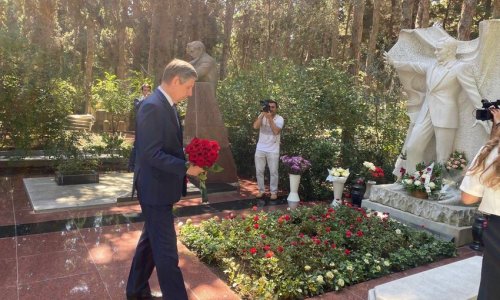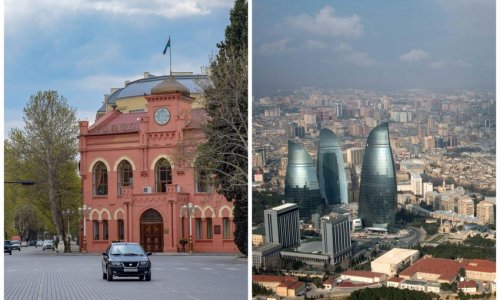Its curator, Clement Cheroux, has risen to the unspoken challenge that any Cartier-Bresson exhibition now presents: how to shed new light on the life and work of an artist who so defined the medium that yet another celebration of his genius might seem superfluous.Cheroux has wisely chosen to tackle his life chronologically, mapping out through around 500 images the stages of Cartier-Bresson's creative development, while allowing us surprising glimpses of the private individual behind the legend. The show includes family albums, portraits of the artist as a young and old man, his early paintings, late drawings, and even a couple of striking, surrealist-influenced collages. Here, the two aspects of Cartier-Bresson's life that have long defined him – his coining of the term "the decisive moment" to describe street photography and the co-founding of Magnum in 1947 – are not so much ignored as woven into the creative tapestry of a restless but intensely focused life.Called simply Henri Cartier-Bresson, the vast exhibition is a deep journey into a singular way of seeing that takes some circuitous but always rewarding byways and, in doing so, emphasises the importance of two often-overlooked touchstones: surrealism and radical politics. Of the former, Cartier-Bresson once said: "Surrealism has had a profound effect on me and all my life I have done my utmost never to betray it." In this context, even some of his most often-seen images – that almost archetypal Frenchman caught mid-leap over a puddle, say – take on a new sense of suggestion; not so much decisive moments as well-observed tableaux that capture the innate absurdism of the everyday.The first section of the show is called Rising Signs. It is a formative outline of where he was coming from – vaguely impressionist streetscapes and an imposing portrait entitled My Landlady and her Husband (1928) – and where he was going – an early image of a stooping figure amid a cluster of circular tables on a street in Florence is the first inkling of the now-familar Cartier-Bresson style of quiet observation.More intriguing are the often odd images he made in Mexico under the influence of André Breton's idea that "beauty will be convulsive or will not be at all": a blurred couple, limbs intertwined; a woman silhouetted by the sea whose wind-blown jacket resembles wings; an almost opaque cardigan drying listlessly on a clothesline.From surrealism to communism may seem quite a leap, but having photographed the poor on the streets of Mexico in the early 1930s, Cartier-Bresson did the same in Paris and Madrid. His documentary work was now underpinned by a social conscience, but it never interfered with his acute way of seeing.The end of the second world war was a defining period for a photographer who captured the collective mixture of relief, exhaustion and anger in images that still arrest the eye. One begins to notice repeated motifs: people looking up at the sky, lazing in parks or playing like children. He was continually drawn to prone figures, whether sleeping mendicants in Spain or exhausted individuals collapsed amid the rubble of European cities.Among all the deftly observed human drama, a series of interior shots of the offices of the Nazi SS on Avenue Foch, in Paris, are ominously suggestive and almost unidentifiable as Cartier-Bresson photographs: a row of suitcases in half-shadow; a deserted room containing a portrait of the Fuhrer. Another more dramatic series, entitled The Return, shows displaced people being disinfected as they leave Dessau, an action that now seems as symbolic as it was practical. Another group of nine images from Dessau records the interrogation of a female prison guard who cowers as she is berated, then beaten, by former inmates. These stills give way to a section of a short film showing the same event in all its unsettling power.Out of this tireless chronicling of a tumultuous decade came Cartier-Bresson's commitment to Magnum, and a second life as a global reportage photographer who merged street photography of the highest order with portraits that also carry his inimitable signature. The more well-known examples are included here: Matisse sketching at home, watched by his pet birds; a blurred Giacometti in his studio flanked by two elongated sculpted figures; an owlish Sartre deep in thought on the Pont des Arts in Paris.Elsewhere, there are a handful of quietly sensual images, including one of his wife Martine Franck's long, stockinged legs resting on a sofa as well as a few rare snapshots of the master at work on the streets taken by accomplices such as René Burri and Marc Riboud. One senses, though, that for all his wanderings, both real and artistic, Cartier-Breson was most at home as a photographer when, unobserved, he was observing people. He was uncannily good at freeze-framing moments or gestures of intimacy amid movement and noise. In one of his many oft-quoted observations on his work, he described his approach in characteristically poetic terms: "When you take a shot, you're halfway between a pickpocket and a tightrope walker." More revealing to me, though, is the subsequent sentence: "It's a perpetual game underscored by incredible nervous tension."That nervous tension is not apparent in his photographs unless you take the time to think about just how he managed to nail it time after time. Patience, for sure, and a certain cunning, plus speed, alertness and a preternatural ability to second-guess what was about to happen just before – almost as – it happened. In a short series, Six Days in Paris (1957), he observes people watching and taking part in bicycle races in a packed velodrome. A young girl and an old woman watch as a blurred rider speeds by, each with their hands on their knees, gazing intently at something out of frame. Their sideways looks are echoed in another portrait of a young man in striped jersey and woolly hat, leaning on his bicycle, looking off to the left, and again in a picture of a competitor carrying a suitcase.In another shot, a very cool young man reads a newspaper while cycling along the track, one foot perched on the handlebar, as if the bike was a mobile armchair. All human life is here, but everyone seems distracted by something other than the main event. It takes a while to register that this is the real subject matter: Cartier-Bresson is telling us that life is always elsewhere, even as he is recording it unfolding.There is a great silence in many of his photographs, and it was echoed by the rapt attention of the hordes who shuffled through the show on the afternoon I was there. Young and old alike seemed intent on taking their time with this extraordinary visual record that, in part, was made in their city and now speaks of a once quintessential Frenchness that is fast disappearing. Likewise, the kind of photography that Cartier-Bresson created and so believed in.If this exhaustive exhibition cannot help but be elegiac – for him, for his and photography's once elevated way of seeing – it is also life-affirming and constantly surprising. It challenges many assumptions about the master while enriching our understanding of his unequalled journey. It is worth the trip to Paris if only to remind oneself how Henri Cartier-Bresson defined photography as the art of observation, and to observe how his images still hold sway over our collective visual understanding of the past century.(theguardian.com)ANN.Az
Comrade Cartier-Bresson: the great photographer revealed as a communist - PHOTO
Culture
20:46 | 21.02.2014

Comrade Cartier-Bresson: the great photographer revealed as a communist - PHOTO
The subtitle of the Pompidou Centre's retrospective of the 20th century's best-known photographer could be: Almost Everything You Know About Henri Cartier-Bresson is Wrong. Or, at least, Long Overdue a Rethink.
Follow us !










